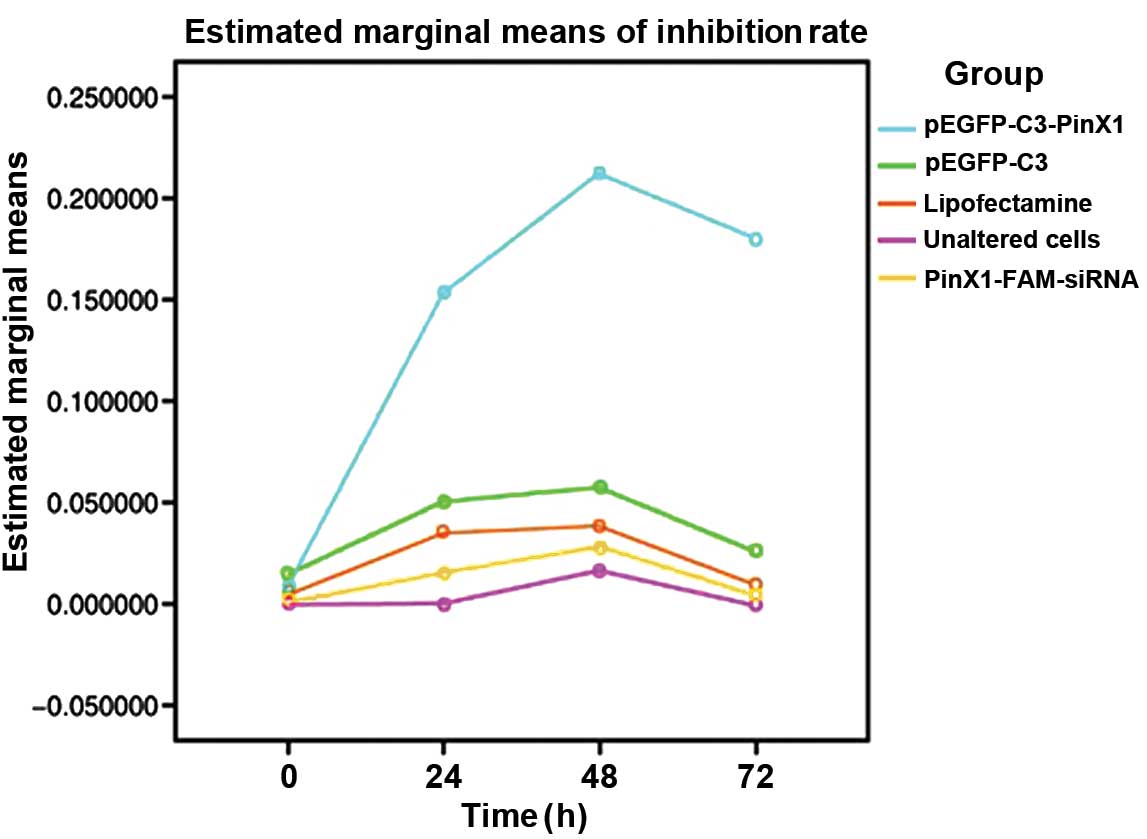Biological significance of PinX1 telomerase inhibitor in esophageal carcinoma treatment
- Authors:
- Published online on: August 1, 2016 https://doi.org/10.3892/etm.2016.3561
- Pages: 2196-2200
Metrics: Total
Views: 0 (Spandidos Publications: | PMC Statistics: )
Total PDF Downloads: 0 (Spandidos Publications: | PMC Statistics: )
Abstract
In the present study, to investigate the expression of PinX1 gene and its functional effects in human esophageal carcinoma (Eca)-109 cell line, expression vectors of human PinX1 (pEGFP-C3-PinX1) and its small interfering RNA (PinX1‑FAM‑siRNA) were constructed and transfected into Eca‑109 cells using Lipofectamine 2000. Firstly, the mRNA expression level of PinX1 was examined using reverse transcription‑polymerase chain reaction (RT‑PCR). Once successful transfection was achieved, the effects on the mRNA level of human telomerase reverse transcriptase (hTERT), telomerase activity, cell proliferation and apoptosis were examined by semi‑quantitative RT‑PCR, stretch PCR, MTT assay and flow cytometry, respectively. Analysis of restriction and sequencing demonstrated that the recombining plasmids were successfully constructed. The results also indicated that transfection with pEGFP‑C3‑PinX1 and PinX1‑FAM‑siRNA into Eca‑109 cells significantly increased PinX1 mRNA, decreased hTERT mRNA by 29.9% (P<0.05), and significantly reduced telomerase activity (P<0.05), inhibited cell growth, and increased the cell apoptotic index from 19.27±0.76 to 49.73±2%. The transfected PinX1‑FAM‑SiRNA exhibited PinX1 mRNA expression levels that were significantly decreased by 70% (P<0.05), whereas the remaining characteristics of Eca‑109 cells, including cell growth, mRNA level of hTERT, telomerase activity and cell apoptotic index were not altered. Exogenous PinX1 has been demonstrated to be highly expressed in human Eca. PinX1 can inhibit human telomerase activity and the expression of hTERT mRNA, reduce tumor cell growth and induce apoptosis. Notably, these inhibitory functions were inhibited by silencing PinX1 in Eca with PinX1‑FAM‑siRNA. PinX1 was successfully increased and decreased in the present study, demonstrating that it may be a potential telomerase activity inhibitor. As PinX1 is an endogenous telomerase inhibitor, it may be used as a novel tumor-targeted gene therapy.













